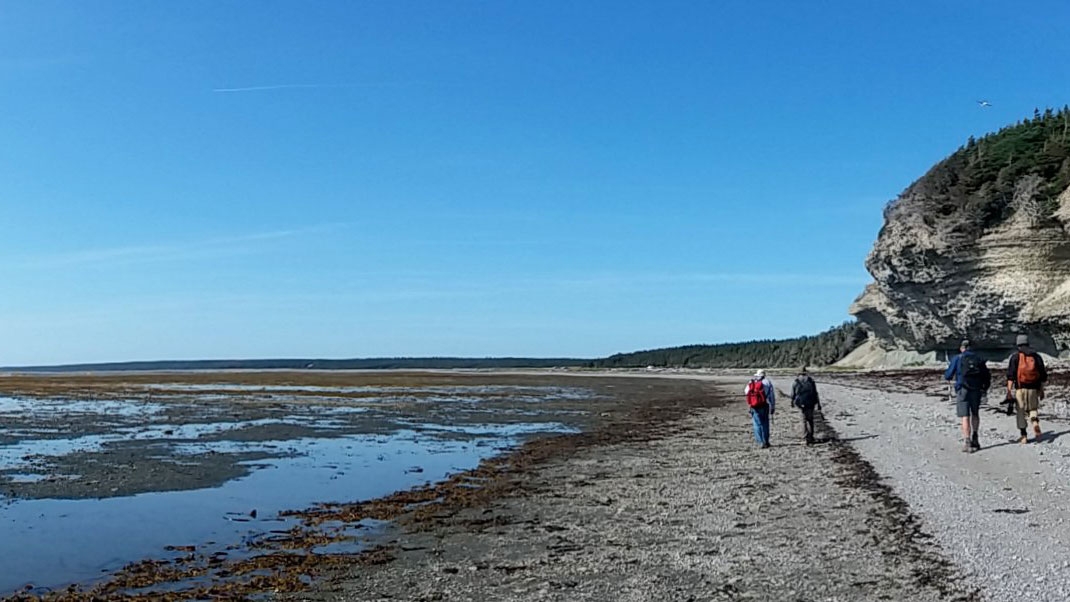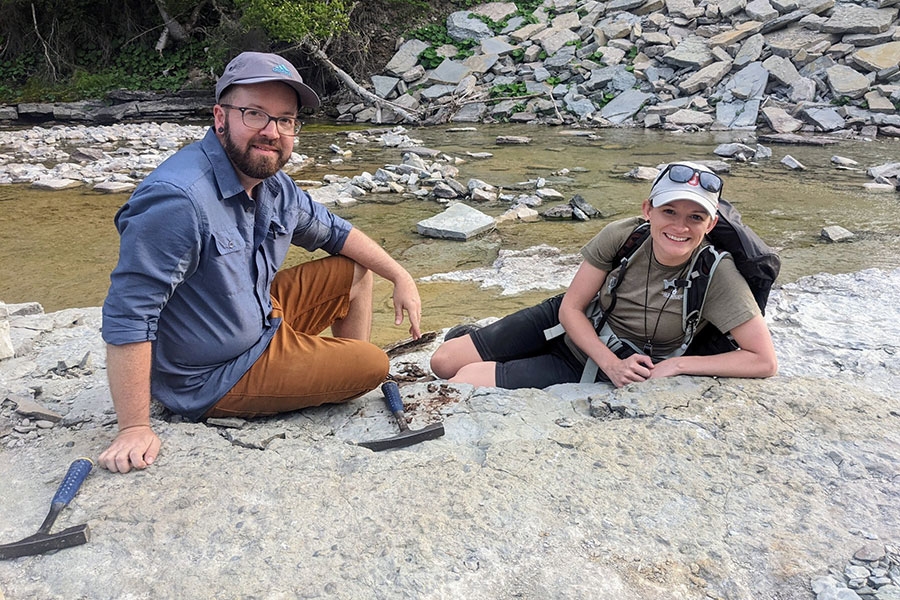
NORMAN, OKLA. – Researchers at the Sam Noble Museum at the University of Oklahoma have been awarded a $621,781 grant from the National Science Foundation to investigate the first major mass extinction in Earth’s history. This funding is part of a $1.17 million collaborative effort between OU researchers and Melanie Hopkins of the American Museum of Natural History in New York City.
The team, led by paleontologists Lena Cole and David Wright, assistant curators of invertebrate paleontology at the Sam Noble Museum and assistant professors in the OU School of Geosciences, will embark on groundbreaking expeditions to Anticosti Island in Canada. Known for its rich fossil deposits, the island will serve as the primary site for the collection of evidence and fossil samples.
“Anticosti Island is difficult to access, has few roads, minimal infrastructure and a small population of about 250 people,” Cole explained. “We camp during fieldwork, hike extensively each day over rough terrain and have to pack-out the very heavy fossils that we collect. Despite being such a challenging environment for research, the rocks and fossils of Anticosti have incredible scientific importance. We find fossil species that are new to science during every field season, and the thrill of making new scientific discoveries is both incredibly exciting and important for understanding past biodiversity.”
Despite the inconvenience of accessing such a remote research site, the unique geology of Anticosti Island means it’s one of the only locations on Earth where scientists can find key information about the Ordovician mass extinction, the first major mass extinction event in Earth’s history.
“Anticosti Island is one of the precious few places in the world containing a complete geologic section capturing what happened on both sides of the mass extinction event,” said Wright. “Reading the rocks on Anticosti Island, so to speak, is a bit like traveling back in time and seeing exactly what life was like before the mass extinction and how ecosystems were impacted in its aftermath. In many ways, paleobiological research on Anticosti Island is like finding a missing chapter from the history of life, and the contents of that chapter reveal previously unknown insights that help us answer the big questions surrounding mass extinctions.”
Their research aims to shed light on the environmental changes that led to the mass extinction and how ecosystems recovered in its aftermath. The findings could provide crucial context for understanding and mitigating modern biodiversity crises.
“The overarching goal of this research is to better understand the first extinction event in the history of life, which occurred around 445 million years ago at the end of the Ordovician period,” Cole explained. “It's well-established that Earth’s climate experienced a major cooling event during this time, followed by abrupt warming, which resulted in extinction of around 85% of all species, but there are still many questions surrounding the nature of this catastrophic extinction.”
Though research into such a distant event in Earth’s history might seem purely academic, lessons about climate change and mass extinction have real and immediate applications to modern societies.
“Today, overwhelming scientific consensus indicates we are currently experiencing a global biodiversity crisis that is alarmingly similar to the early stages of a potential mass extinction event, except this time the underlying causes of rapid, global change relate to human-mediated activities—not geologic events,” Wright said. “This makes understanding what happened to life on Earth 445 million years ago more than just an intellectual curiosity for scientists. It’s highly relevant information for understanding today’s world. We can use our knowledge of the past to make predictions for how modern species will respond to global climate change and other threats to Earth’s biodiversity.”
He added, “The more we learn about mass extinctions and the history of life, the more we realize we must support ongoing conservation efforts to mitigate biodiversity losses happening today. The fossil record teaches us that extinction is forever and that ecosystem recovery takes many millions of years. If we don’t listen to the lessons of life’s history, we not only place the future of other species inhabiting this planet at risk, but also the future of our own species and the world in which we evolved.”

About the Sam Noble Museum
The Sam Noble Museum is the officially designated natural history museum for the state of Oklahoma and is located on the University of Oklahoma Norman campus at 2401 Chautauqua Ave.
About the University of Oklahoma
Founded in 1890, the University of Oklahoma is a public research university located in Norman, Oklahoma. As the state’s flagship university, OU serves the educational, cultural, economic and health care needs of the state, region and nation. OU was named the state’s highest-ranking university in U.S. News & World Report’s most recent Best Colleges list. For more information about the university, visit ou.edu.
The University of Oklahoma professor Christina Giacona is making her fourth trip to the Grammy Awards next month, as four albums she worked on have received nominations from the Recording Academy.
In a rare achievement for an undergraduate student, Colby Higdon, a geology major on the paleontology track with the University of Oklahoma has published original paleontological research conducted at the Sam Noble Oklahoma Museum of Natural History that reveals new insights into whether competition between ancient animals was responsible for their extinction.
Newly published research in Science Advances, led by Jessica Cerezo-Román, at the University of Oklahoma, documents the oldest known cremation in Africa and provides some of the earliest evidence for intentional cremation using a pyre in the world.